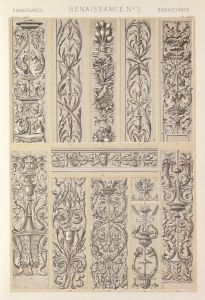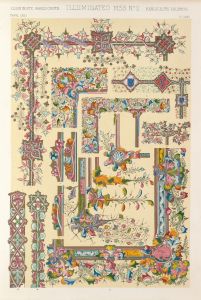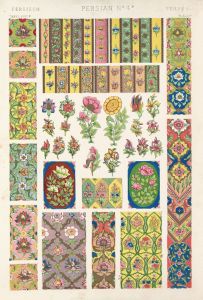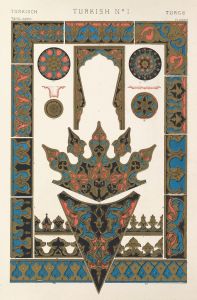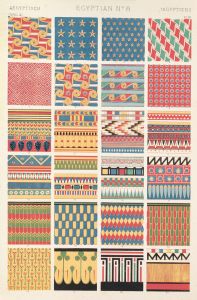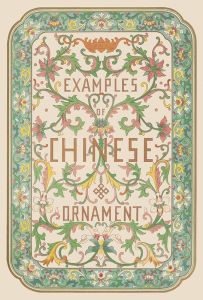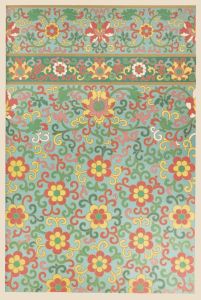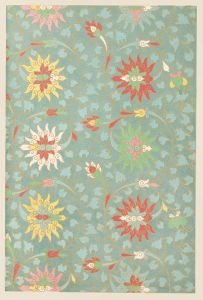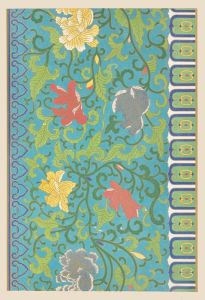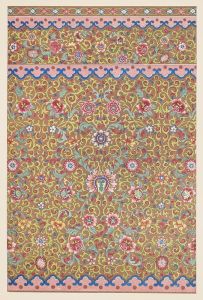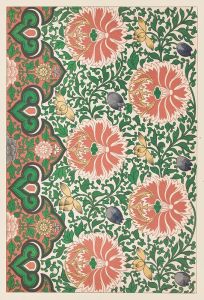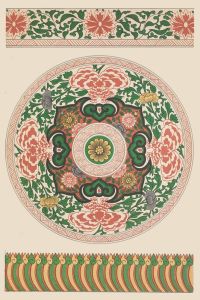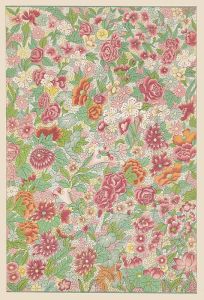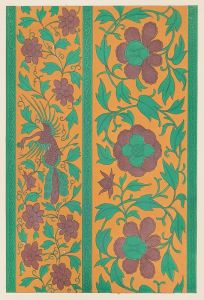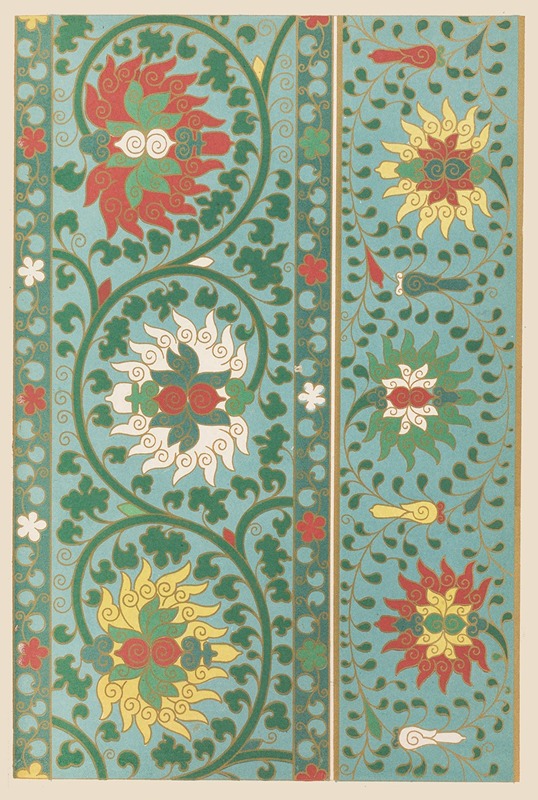
Examples of Chinese ornament, Pl.11
A hand-painted replica of Owen Jones’s masterpiece Examples of Chinese ornament, Pl.11, meticulously crafted by professional artists to capture the true essence of the original. Each piece is created with museum-quality canvas and rare mineral pigments, carefully painted by experienced artists with delicate brushstrokes and rich, layered colors to perfectly recreate the texture of the original artwork. Unlike machine-printed reproductions, this hand-painted version brings the painting to life, infused with the artist’s emotions and skill in every stroke. Whether for personal collection or home decoration, it instantly elevates the artistic atmosphere of any space.
"Examples of Chinese Ornament, Pl.11" is a plate from the influential design book "The Grammar of Ornament," authored by Owen Jones and first published in 1856. Owen Jones was a prominent British architect and designer known for his work in color theory and his contributions to the decorative arts. His book, "The Grammar of Ornament," is a comprehensive collection of design patterns and motifs from various cultures around the world, serving as a significant resource for designers and architects in the 19th century and beyond.
Plate 11 specifically focuses on Chinese ornamentation, showcasing the intricate and symbolic designs characteristic of Chinese art. The plate is part of a larger section in the book dedicated to Chinese design, which highlights the unique aesthetic principles and motifs that define Chinese decorative arts. These designs often include elements such as floral patterns, geometric shapes, and symbolic imagery, reflecting the rich cultural heritage and artistic traditions of China.
Jones's work in "The Grammar of Ornament" was pioneering in its approach to cataloging and analyzing design elements from different cultures. He emphasized the importance of understanding the underlying principles of design rather than merely copying decorative motifs. This approach was innovative for its time and influenced the development of design education and practice.
In the context of Chinese ornamentation, Jones admired the harmony and balance found in Chinese designs. He noted the use of symmetry, repetition, and the careful consideration of color and form. The designs in Plate 11 exemplify these characteristics, showcasing the elegance and sophistication of Chinese decorative art.
Jones's interest in Chinese ornament was part of a broader 19th-century fascination with the art and culture of Asia, often referred to as "Orientalism." This interest was fueled by increased trade and contact between Europe and Asia, leading to a greater appreciation and demand for Asian art and design in Europe. However, it is important to recognize that this fascination was also accompanied by a tendency to exoticize and sometimes misinterpret Asian cultures.
"Examples of Chinese Ornament, Pl.11" serves as a testament to the enduring appeal and influence of Chinese design. It reflects Jones's respect for the artistry and craftsmanship of Chinese ornamentation and his desire to share these designs with a wider audience. The plate, along with the rest of "The Grammar of Ornament," continues to be a valuable resource for those interested in the history of design and the cross-cultural exchange of artistic ideas.
Overall, Owen Jones's work remains a significant contribution to the study of design, offering insights into the diverse and rich traditions of ornamentation from around the world. His documentation and analysis of Chinese ornamentation in Plate 11 highlight the timeless beauty and complexity of Chinese art, ensuring its appreciation by future generations of designers and art enthusiasts.





